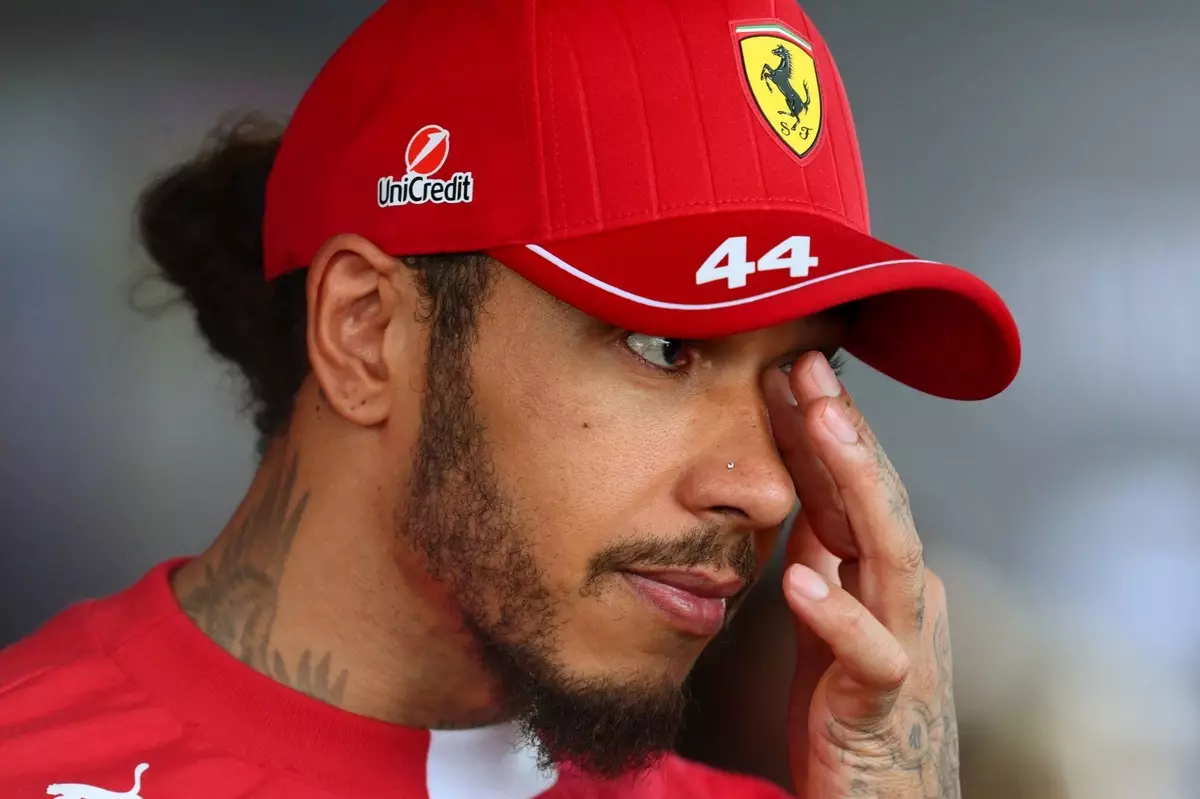Professional sports figures like Lewis Hamilton epitomize resilience, yet their failures expose a vulnerable core that demands scrutiny. After a disheartening Hungarian Grand Prix, Hamilton’s frustration was palpable, revealing an internal struggle that often accompanies high-caliber sportsmanship. It isn’t merely about the loss or poor performance; it’s about the emotional weight carried by athletes who hold themselves to extraordinary standards. Such disappointment can be a double-edged sword—either debilitating or a catalyst for an even greater comeback.
Hamilton’s reaction, suggesting that Ferrari should seek different drivers, underscores a complex tension: the ego battling reality. Highly competitive individuals tend to internalize setbacks as personal shortcomings rather than temporary hurdles. Recognizing these feelings is critical because suppression breeds stagnation, but openly acknowledging frustration can ignite the fire needed for a recovery that many deem impossible. The lesson here is that pain, when processed correctly, becomes fuel for renewal rather than an endpoint.
The Power of Self-Criticism and Its Impact on Performance
Hamilton’s candid self-criticism, although seemingly harsh, indicates an athlete with relentless drive. The danger, however, lies in becoming ensnared by negative thought cycles. When elite performers catastrophize their setbacks—seeing them as proof of inadequacy rather than opportunities for growth—they risk losing their confidence entirely. Yet, Vasseur’s observations imply that Hamilton’s frustrations stem from high expectations and a desire for perfection. Such a mindset, while potentially destructive if unmanaged, can serve as a powerful motivator if channeled correctly.
In professional sports, self-awareness is often the precursor to improvement. Hamilton’s acknowledgment of his limitations in qualifying demonstrates a critical first step: embracing vulnerability as an element of strength. True champions analyze their failures, draw lessons, and adapt. The key is to balance critical self-assessment with an optimistic outlook geared toward future success—not dwelling on what went wrong, but focusing on what can be controlled moving forward.
Leadership that Inspires Resurgence, Not Demotivation
Fred Vasseur’s role as a team principal extends beyond mere management; it involves fostering an environment where failures are viewed as integral to the journey of excellence. His statement that Hamilton is “not demotivated” despite the setbacks speaks volumes about the importance of psychological safety within high-stakes teams. Leaders who understand the emotional landscape of their athletes empower them to transform disappointment into determination.
Vasseur’s assertion that Hamilton’s frustration is “normal” resonates with the reality that even the most successful athletes grapple with moments of despair. It’s how they process these moments that determine their trajectory. The reassurance that Hamilton remains driven and capable of bouncing back helps reinforce a growth-oriented mindset—crucial for sustaining long-term success. Athletes are not machines; their resilience depends heavily on the emotional resilience fostered by supportive leadership and self-belief.
The Subtle Art of Navigating Performance Fluctuations
Analyzing the minute differences in Hamilton’s and Leclerc’s qualifying performances reveals the fine margins that separate victory from defeat in Formula 1. Vasseur’s perspective—that Hamilton was not far from a better grid position—captures an important truth: elite competition often hinges on the smallest variances. For top-tier athletes, a tenth of a second can mean the difference between pole and elimination. Recognizing this sharp edge is vital to maintaining perspective.
What we see here is a reminder that setbacks are not absolute failures, but complicated, sometimes unpredictable, situations where luck, execution, and mental focus intersect. Hamilton’s experience exemplifies the importance of mental toughness—knowing when a slight misjudgment or momentary lapse can derail a carefully laid plan. Champions harness such events as opportunities for strategic recalibration, not as reasons to abandon their pursuits. The key lies in maintaining composure amid chaos, turning disappointment into motivation, and relentlessly pushing forward.
The Road Ahead: From Frustration to Triumph
Ultimately, the true measure of a champion isn’t how often they succeed but how they respond to adversity. Hamilton’s current struggles serve as a test of his mental resilience, and Vasseur’s supportive stance underscores that setbacks are inevitable but not defining. What distinguishes the great is their unwavering commitment to improvement, fueled by the understanding that every failure is a stepping stone toward mastery.
Despite the harshness of recent results, Hamilton’s path forward remains open. The lessons learned from frustration, alongside a team’s strategic adjustments, can catalyze a remarkable comeback. Heavy-hearted moments in sport are inevitable; what matters most is how athletes embrace these challenges—transforming raw disappointment into a sustainable force for greatness. In the relentless pursuit of excellence, resilience isn’t just a trait—it becomes the foundation of legacy.


Leave a Reply